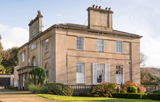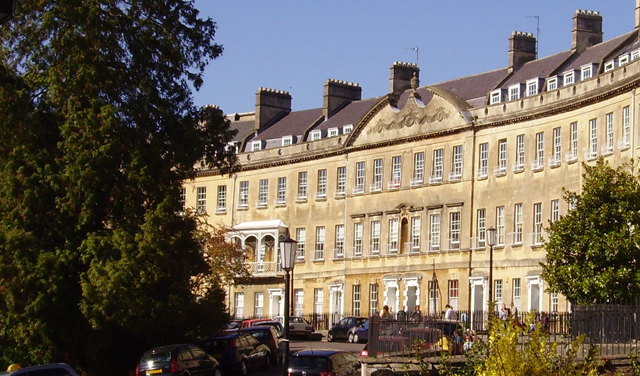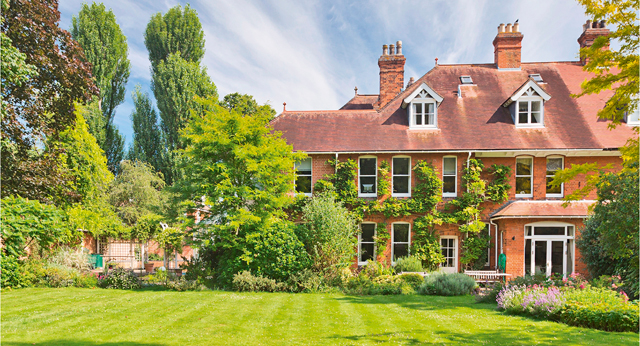Houses for sale in historic towns
Penny Churchill explores the market for houses in historic towns.


A steady rise in the value of town houses in heritage towns and cities around the UK is one of the highlights of an otherwise subdued prime property market beyond London’s commuter belt, as buyers, vendors and estate agents await the General Election.
Matthew Leonard of Knight Frank in Bath underlines the strength of the city-centre market, where strong demand, both from local buyers and from further afield, saw property prices rise by 5% in 2014, compared with the wider prime country market, which registered patchy annual growth of 3.4% overall. Encouragingly, the trend has continued into 2015.
‘Buyers already living in Bath or the South-West accounted for nearly 60% of sales in the past 12 months, but there has also been an increase in the number of buyers coming directly from London: this group generated 22% of all sales in 2014, compared with 14% the previous year. Bath’s excel- lent schools, beautiful architecture and wonderful lifestyle continue to be a big draw for buyers from all over the UK, London and abroad. We’ve also seen a growing number of “second steppers”, who are moving into town from larger country houses in the surrounding area,’ Mr Leonard reveals.
Knight Frank (01225 325999) are handling the sale of Grade II-listed Bathwick Hill House (Fig 1) on Bathwick Hill, one of Bath’s most prestigious streets, which climbs south-east from the main A36 towards the University of Bath on Claverton Down.
The agents quote a guide price of £3.25 million for the imposing, 7,690sq ft stone house, built by the prolific Regency architect Henry Edmund Goodridge, next door to his own Italianate villa, Bathwick Grange, in about 1828. Bathwick Hill House, which featured in Country Life (September 4, 1997) and in an HTV series on Bath by John Betjeman in 1962–64, stands two-thirds of the way up the hill in a conservation area known to locals as ‘Little Florence’, facing south over its 11⁄2 acres of landscaped gardens towards the city and National Trust-owned land.
For almost two decades, it’s been the family home of its current owners, who are now looking to downsize.
Offering the space and amenities of a Georgian country house within a mile of Bath Spa station and its high-speed rail links to London, Bathwick Hill House has four main reception rooms, a billiards room, a kitchen/ breakfast room, a spa room, a gym, master and guest suites, three further bedrooms, a bathroom and a staff flat. It comes with an indoor swimming- pool complex, extensive garaging and a two-bedroom lodge and, although it now needs some updating, ‘it has stood the test of time extremely well,’ the agents say.
Sign up for the Country Life Newsletter
Exquisite houses, the beauty of Nature, and how to get the most from your life, straight to your inbox.
The past 10 years have been testing times for historic Somerset Place in Lansdown, Bath, a crescent of Grade I-listed Georgian houses designed by the architect John Eveleigh. He went bankrupt in the process and the project, which started in 1790, was eventually completed in the 1820s. The crescent was badly bombed during the Second World War and eventually rebuilt. After the war, individual buildings were bought by Bath Corporation to house the Bath College of Domestic Science, followed by Bath School of Art and Design, part of Bath Spa University. The buildings were returned to residential use in 2008, when the school was relocated and the entire crescent sold off.
Then came recession, and the redevelopment of Somerset Place ran into problems before being rescued in February 2012 by the Asian-backed Strategic Iconic Assets Heritage Acquisition Fund, which completed the £50 million acquisition, and embarked on a £60 million scheme to restore the buildings as a mix of town houses and apartments.

David Mackenzie of Carter Jonas (01225 7472507) is offering 15, Somerset Place (Fig 3), one of the last of the prestigious, five-storey town houses, on a ‘shell and core’ basis, whereby, following extensive restoration and refurbishment of the fabric of the building, the house has been left in its original state inside, allowing new owners to renovate the interior as they wish.
A guide price of £1.95m is quoted for the house, which has some 4,500sq ft of Georgian living space, with original open fireplaces, sash windows, wooden floorboards, a splendid first-floor drawing room overlooking the green and the city below and a large walled garden. The cost of refurbishing the interior is likely to be about £500,000.
‘Recession, what recession?’ Cambridge estate agents may well ask, as the thriving university, science parks and schools continue to draw homebuyers from the UK and elsewhere: 25% from overseas, 25% from London, 25% from Cambridge itself and 25% from elsewhere in the country, estimates Ed Meyer of Savills (01223 347147).

With prices still rising faster than anywhere else in the country, he quotes a guide price of £3m for 13, Cranmer Road, Cambridge, (Fig 2) a substantial, three-storey, Victorian, red-brick house built in 1895 and thought to have been designed along with its attached neighbour by J. B. Lock, the then Bursar of Gonville & Caius. A no-through road and one of the best streets in Cambridge, Cranmer Road lies just west of the city’s historic core and is much favoured by leading academics and other high-profile residents, who tend to hang onto to their Cambridge houses, thereby boosting values.
The present owners of 13, Cranmer Road have lived there for 30 years, and plan to downsize within the city. During their tenure, they have made a number of improvements to the house, which has four reception rooms, a kitchen/breakfast room, eight bedrooms, three bath/shower rooms, parking for several cars and just under half an acre of mature gardens and grounds.
-
 Burberry, Jess Wheeler and The Courtauld: London Craft Week 2025 explained
Burberry, Jess Wheeler and The Courtauld: London Craft Week 2025 explainedWith more than 400 exhibits and events dotted around the capital, and everything from dollshouse's to tutu making, there is something for everyone at the festival, which runs from May 12-18.
By Lotte Brundle Published
-
 Everything you need to know about private jet travel and 10 rules to fly by
Everything you need to know about private jet travel and 10 rules to fly byDespite the monetary and environmental cost, the UK can now claim to be the private jet capital of Europe.
By Simon Mills Published
